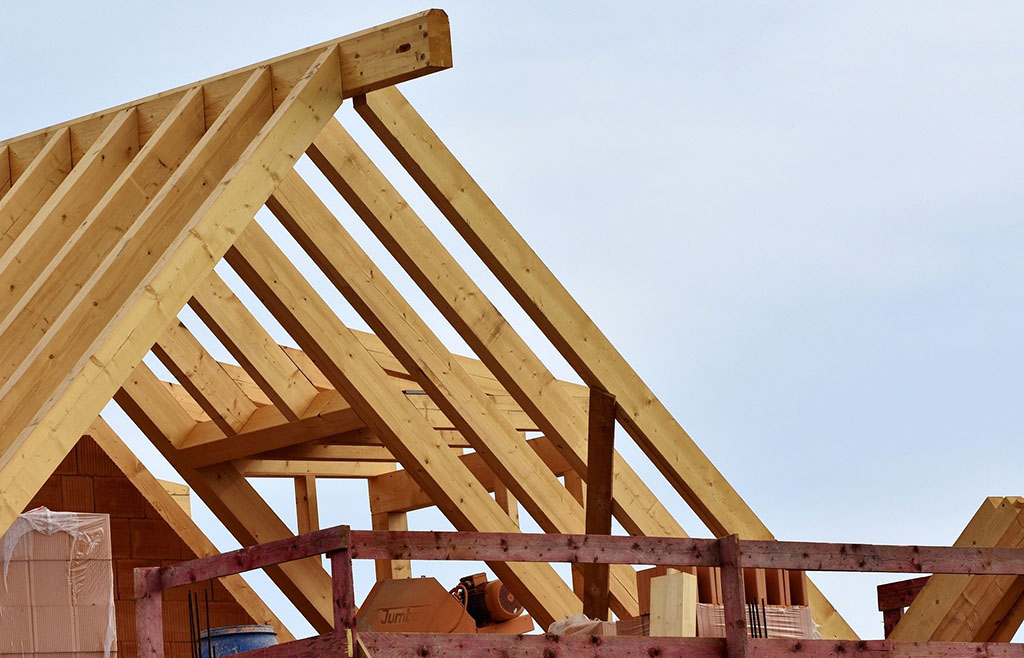Roof Truss Terminology: Explained

Building a new roof can be complicated. With all the different beams, decking, underlayments, and materials, there are a lot of components to keep track of. That’s why many homeowners and construction professionals make the process easier on themselves by using prefabricated roof trusses.
But here’s the catch: in order for roof trusses to be easy to work with, you first need a clear understanding of what they are and what they’re made of. To get you started, we’ll define some of the most basic roof truss terms below.
What Is a Roof Truss?
A roof truss is a prefabricated structural framework that’s designed to support a roof. It generally takes the place of traditional roof rafters.
Roof trusses are manufactured in a factory-controlled, dry setting, then shipped fully assembled to the construction site — drastically reducing the time, energy, and money it takes to assemble a roof from scratch. A roof truss will also reduce the risk of human error during construction since it’s manufactured with precise, quality-controlled engineering.
Definitions of Roof Truss Components
Now, let’s dive into some more specific roof truss terminology, starting with the various components that make up a roof truss.
Apex: The apex is the top-most point of a roof truss. On a common triangular roof truss, this is the peak of the roof. However, on roof trusses with a flat (or hip) roof, this is the top-center point of the truss.
Bottom Chord: The bottom chord is the long horizontal beam that defines the lower edge of a truss. The rest of the truss is built upon it, so it needs to provide strong support.
Girder: A girder is a main roof truss that supports any secondary trusses framing into it.
Heel: A heel is a joint in a pitched roof truss where the top and bottom chords meet.
Joint: A joint is a point of intersection between a chord and a web (or webs).
Overhang: The overhang is the extension of the top chord beyond the heel joint. In other words, it’s how far the top chord hangs over its bearing support. When the roof is complete, the overhang is the distance from the bottom of the roof to the building itself.
Purlin: A purlin is a smaller beam that runs perpendicular to the top chords of each roof truss. They’re notably used to support the roof’s decking.
Top Chord: The top chord is the top-most beam of a roof truss. In the most common types of trusses, these beams are slanted and hang over the side of the building.
Web: A web includes beams that join top and bottom chords in a triangular pattern. They’re capable of carrying tension and compression stress, which helps keep the truss from bending.
Definitions of Other Important Roofing Terms
Aside from roof truss components, there are a few other broad roofing terms that are helpful to know before starting your project.
Decking: Decking, or sheathing, is the material that is nailed into purlins and makes up the backing of a roof. It’s where exterior materials like shingles are applied.
Felt/Underlayment: Felt, or underlayment, acts as a second layer of protection for roof decking. It’s applied to the decking and is usually waterproof to provide a barrier against elements like water that may run underneath the shingles.
Rafters: Rafters are the exposed beams that support a roof. They’re what roof trusses are intended to replace.
Slope: Slope refers to how steep a roof is. Most commonly, roofers measure slope by the rise in inches for every foot of horizontal length. For example, a roof that rises 4 inches for every foot of horizontal length has a 4-in-12 slope, and any roof that rises 6 inches for every foot of horizontal length has a 6-in-12 slope.
Truss terminology can get confusing. That’s why our experts are here to help. At Standard Supply & Lumber, we value excellent service just as much as we value quality products, so you’re always guaranteed a buying experience that leaves you feeling informed and ready to take the next step in your project. If you have any questions about your home building or improvement project, don’t hesitate to give us a call or contact us online.
